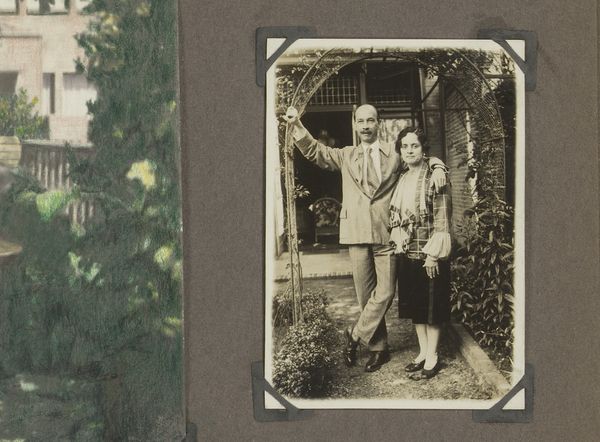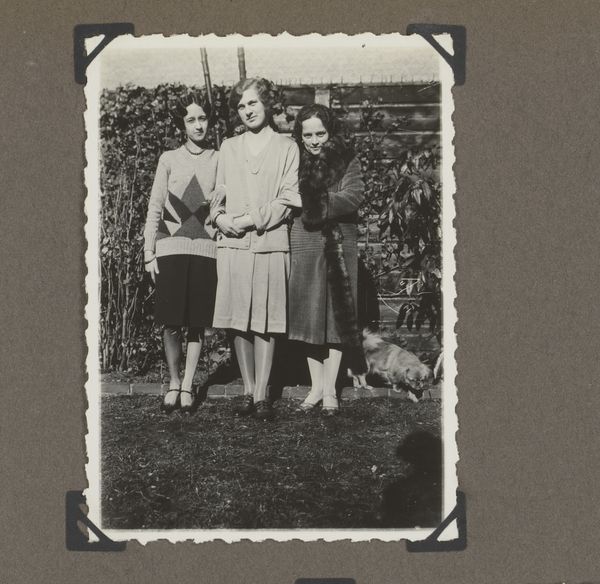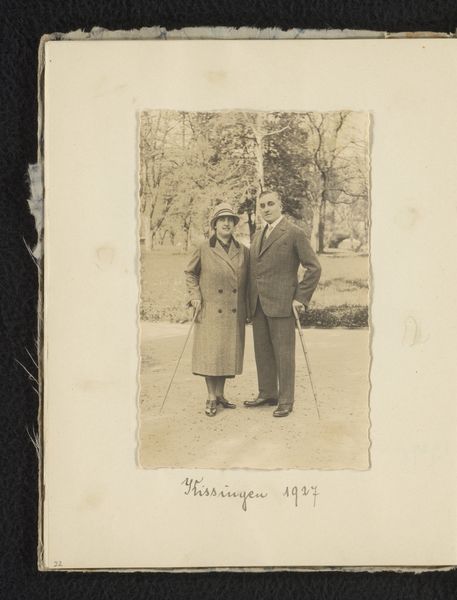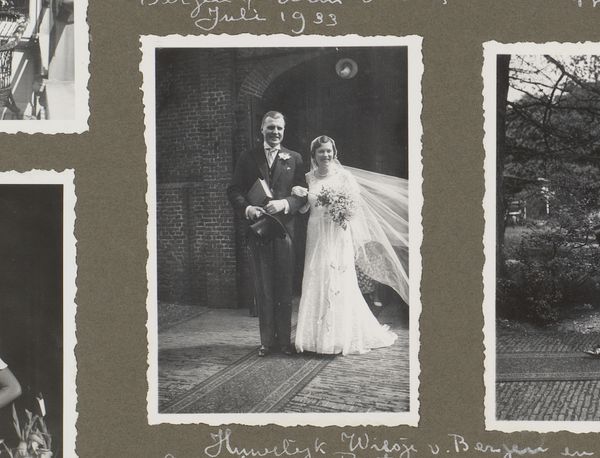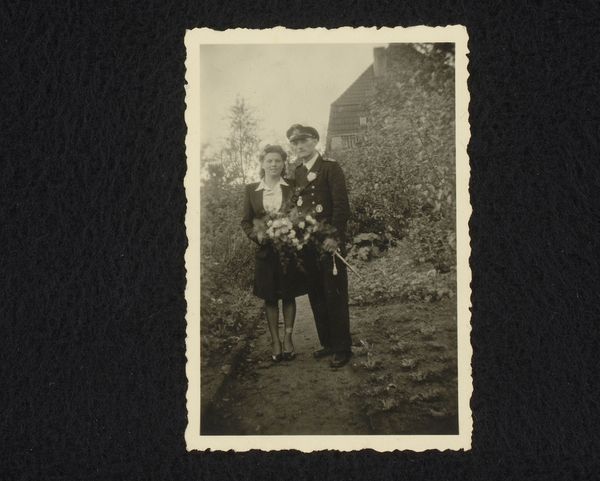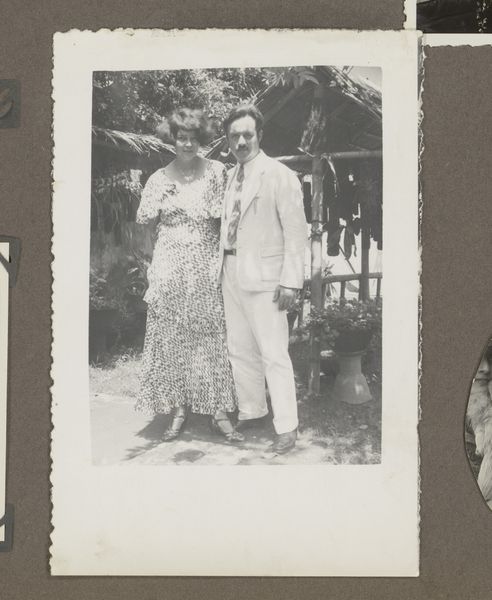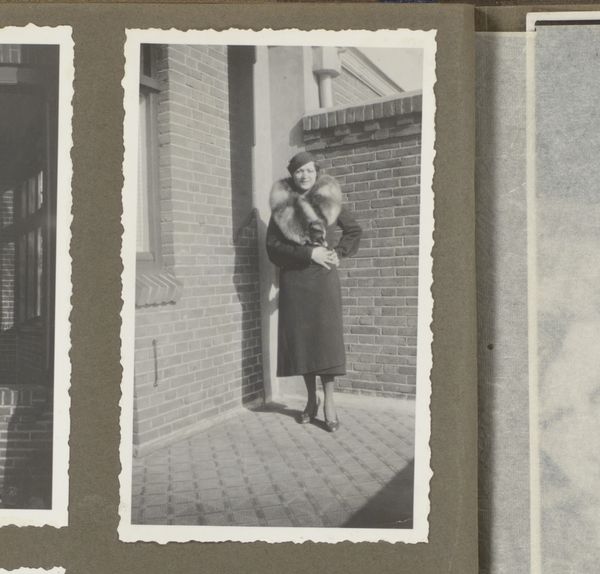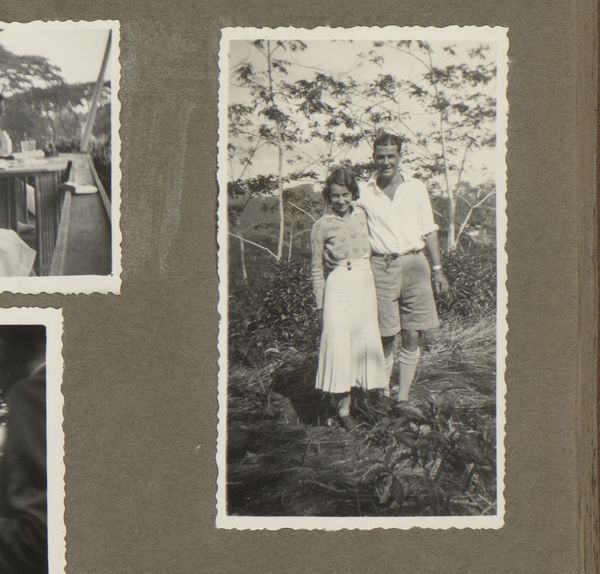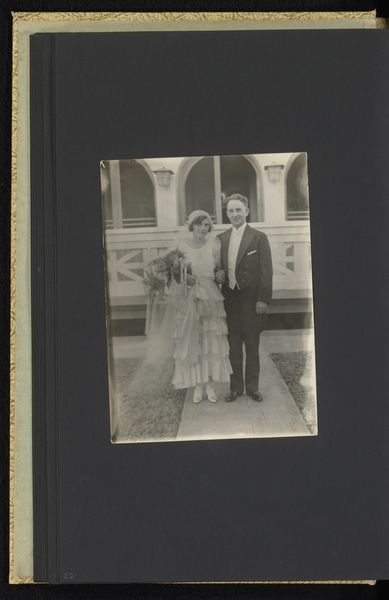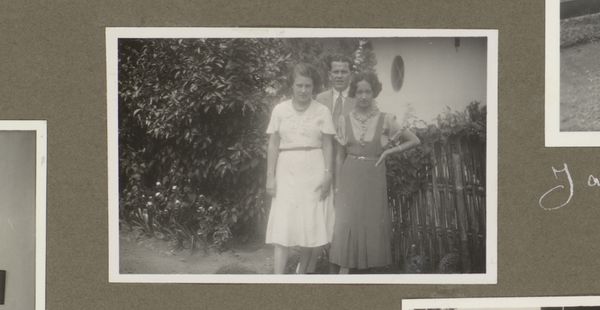
Portret van Paul Riem en Wilhelmina van Zijll de Jong in een tuin, Londen 1932 - 1936
0:00
0:00
photography, gelatin-silver-print
#
portrait
#
aged paper
#
reduced colour palette
#
muted colour palette
#
sketch book
#
collage layering style
#
photography
#
personal sketchbook
#
historical fashion
#
journal
#
group-portraits
#
gelatin-silver-print
#
storyboard and sketchbook work
#
sketchbook art
#
modernism
#
realism
Dimensions: height 89 mm, width 62 mm
Copyright: Rijks Museum: Open Domain
Curator: This is a fascinating gelatin-silver print dating from 1932 to 1936, titled "Portret van Paul Riem en Wilhelmina van Zijll de Jong in een tuin, Londen." It presents a formally posed couple against a backdrop of what seems to be a typical London garden. Editor: My first impression is of subdued elegance. The limited grayscale palette lends a nostalgic, almost dreamlike quality. There’s a quiet dignity in their posture and clothing; the composition centers on the subjects and creates an impression of stillness. Curator: Yes, it’s interesting how the clothing, the man's suit, and especially the woman's tiered dress and fur stole, speak to the fashions of the era and their social standing. But, considering the social and political unrest simmering globally during the '30s, the image becomes weighted with an unspoken tension, a sense of holding onto normalcy amid uncertainty. Editor: Absolutely. Fur, of course, carries significant symbolic weight – historically associated with wealth, status, and even a certain primal connection to the animal world. Her stole evokes both sophistication and vulnerability; you could argue it visualizes how femininity intersects with power during interwar. Also, what’s intriguing here is how a typical emblem of luxury is presented in almost quotidian and intimate setting – the familial back garden. It points to how visual markers get recontextualized. Curator: Furthermore, the photographic medium itself during that period offered both unprecedented accessibility and manipulation. Analyzing the choice to frame this portrait within what seems to be a larger scrapbook or journal opens considerations about privacy, performativity, and self-representation in interwar Europe. What does it mean to curate one's image within a family album versus presenting it publicly? Editor: And it’s precisely that framing which underscores themes of memory and history. The scrapbook aesthetic suggests the photograph wasn't meant as a singular, stand-alone statement, but as part of a larger, ongoing family narrative – adding layers of sentimental and commemorative values. These people are literally "placed" and presented alongside personal documents, effectively blending past events into an aesthetic. Curator: This photographic portrait provides so much in the way of revealing complex negotiations between personal identity and the larger historical and social landscape that the couple was navigating. It highlights, by implication, issues surrounding class, gender, and representation during that era. Editor: A visual reminder how intimate portraits can serve as both deeply personal archives and potent symbolic artifacts. It invites us to unpack the layers of meaning embedded in seemingly simple snapshots.
Comments
No comments
Be the first to comment and join the conversation on the ultimate creative platform.
